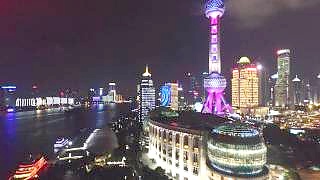Capital of HuNan province.
With Walk East ...
[640],shadow=true,start=,stop=1:26 Changsha Lieshi Park
54:20 Downtown Night Walk
1:36:06 Orange Island Park Night Walk

Live more ...
 ChangSha 长沙 night walk and park tour
ChangSha 长沙 night walk and park tourCapital of HuNan province.
With Walk East ...
[640],shadow=true,start=,stop=1:26 Changsha Lieshi Park
54:20 Downtown Night Walk
1:36:06 Orange Island Park Night Walk


|
With AJ Donnelly's Evolution Empire ...
|

|
Located within the LingYing Scenic Area, the temple lies in a beautiful and tranquil setting.
With Go Around China ...
|

|
昆明~石林…奇峰異石
Approximately 90 km (55 miles) from the provincial capital of YunNan, KunMing.
|

|

|
Beautiful drone footage, like a dream ...
|

|
With DianXi XiaoGe ...
|